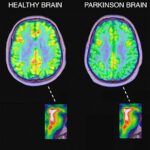List Of Drugs That Cause Extrapyramidal Symptoms (EPS)

Extrapyramidal symptoms (EPS) are a group of side effects that can occur as a result of taking certain medications, particularly antipsychotic medications. These symptoms are caused by the disruption of normal dopamine function in the brain, which can affect the control of movement.
The term “extrapyramidal” refers to the areas of the brain that are involved in motor control, outside of the pyramidal tract. EPS can manifest in various ways and can include the following symptoms:
1. Akathisia: This is characterized by an inner sense of restlessness and an inability to sit still. People with akathisia often feel compelled to constantly move or walk.
2. Dystonia: Dystonia involves involuntary muscle contractions that result in repetitive or twisting movements. It can affect various parts of the body, such as the face, neck, limbs, or trunk.
3. Parkinsonism: This includes symptoms similar to those seen in Parkinson’s disease, such as bradykinesia (slowness of movement), rigidity (stiffness), tremors, and postural instability.
4. Tardive dyskinesia: This is a potentially irreversible condition characterized by repetitive, involuntary movements, such as facial grimacing, lip smacking, tongue protrusion, or rapid movements of the limbs.
These symptoms can vary in severity and can occur soon after starting medication or after prolonged use. The risk of developing EPS is higher with certain types of medication. However, EPS can occur with any medication that affects dopamine function in the brain.
In this article, we will explore some common drugs known to cause EPS and gain a better understanding of their effects.
List Of Drugs That Cause Extrapyramidal Symptoms (EPS)
The following drugs have been reported to cause extrapyramidal symptoms (EPS):
1. Antipsychotic Medications: Antipsychotic medications, particularly the first-generation or “typical” antipsychotics, have a well-documented association with EPS. These drugs are primarily used to treat psychiatric conditions such as schizophrenia and bipolar disorder. Examples of typical antipsychotics include haloperidol, chlorpromazine, and fluphenazine.
2. Atypical Antipsychotics: Although atypical antipsychotics have a lower risk of causing EPS compared to typical antipsychotics, they are not entirely devoid of such side effects. Medications like risperidone, olanzapine, quetiapine, and aripiprazole can still cause EPS, although the incidence is generally lower.
3. Antiemetic Drugs: Certain medications used to alleviate nausea and vomiting, such as metoclopramide and prochlorperazine, can induce EPS. These drugs act on dopamine receptors in the brain and can lead to involuntary movements, particularly in long-term or high-dose use.
4. Antidepressants: While uncommon, some antidepressants have been associated with EPS. Tricyclic antidepressants (TCAs) like amitriptyline and nortriptyline may occasionally cause EPS symptoms due to their effects on dopamine receptors. However, the newer selective serotonin reuptake inhibitors (SSRIs) and serotonin-norepinephrine reuptake inhibitors (SNRIs) generally have a lower risk of causing EPS.
5. Anti-Parkinsonian Medications: Ironically, drugs used to manage Parkinson’s disease can sometimes induce EPS themselves. Dopamine agonists like pramipexole and ropinirole, which help increase dopamine levels in the brain, may lead to symptoms resembling Parkinsonism or dystonia. These symptoms can be particularly problematic if the dosage is too high.
How to Cope With Extrapyramidal Symptoms (EPS)
Extrapyramidal symptoms (EPS) can be distressing and impact daily life for individuals who experience them. If you are dealing with EPS, it is important to work closely with your healthcare provider to manage the symptoms effectively. While treatment options may vary based on the underlying cause of EPS, here are some general coping strategies and support methods that can help:
1. Open Communication with Healthcare Provider: Maintain open and honest communication with your healthcare provider. Share your concerns, experiences, and any changes in symptoms. They can guide you through treatment options and make adjustments to your medication regimen if necessary.
2. Medication Adjustments: If EPS symptoms arise as a side effect of medication, your healthcare provider may consider adjusting the dosage or switching to an alternative medication with a lower risk of causing EPS. Never make changes to your medication regimen without consulting your healthcare provider.
3. Physical Therapy and Exercise: Engage in regular physical exercise and consider working with a physical therapist who specializes in movement disorders. They can provide exercises and techniques to improve muscle control, coordination, and flexibility, which may help manage EPS symptoms.
4. Stress Management: Stress can worsen EPS symptoms. Explore stress-reduction techniques such as deep breathing exercises, meditation, yoga, or engaging in activities you find relaxing and enjoyable. Finding healthy ways to cope with stress can improve overall well-being.
5. Supportive Services: Seek support from mental health professionals, support groups, or online communities where you can connect with others who have similar experiences. Sharing your concerns and insights can provide emotional support and valuable coping strategies.
6. Lifestyle Modifications: Certain lifestyle modifications may help alleviate EPS symptoms. These include getting enough sleep, maintaining a balanced diet, avoiding excessive caffeine or alcohol consumption, and reducing exposure to other potential triggers like extreme temperatures.
7. Assistive Devices and Aids: In some cases, assistive devices such as canes, walkers, or braces may help with mobility and reduce the risk of falls. Occupational therapists can provide guidance on adaptive techniques and assistive devices that can improve daily functioning.
8. Regular Check-ups: Keep regular appointments with your healthcare provider to monitor the progression of symptoms and evaluate the effectiveness of treatment. This will allow for timely adjustments to your management plan, if needed.
Remember, everyone’s experience with EPS is unique, and what works for one person may not work for another. It is essential to work closely with your healthcare provider to tailor an individualized approach to manage your EPS symptoms effectively.
Conclusion
Extrapyramidal symptoms (EPS) are movement disorders that can arise as side effects of certain medications. The incidence of EPS varies depending on factors such as the medication, dosage, duration of use, and individual susceptibility. Typical antipsychotics have a higher risk of causing EPS (10%-50% or higher), while atypical antipsychotics have a lower risk (5%-25%). Antiemetic medication like metoclopramide can lead to EPS (20%-30% or higher). EPS is less common with newer antidepressants (SSRIs and SNRIs) but may occur with tricyclic antidepressants (TCAs). Anti-Parkinsonian medications can induce EPS if dosages are too high.
The incidence of EPS can be influenced by individual factors, and early recognition and management are important. It is important for healthcare providers and patients to be aware of the drugs that carry a risk of EPS, as early recognition and intervention can significantly improve outcomes. If EPS symptoms develop, it is crucial to consult a healthcare professional to evaluate the appropriateness of the medication, adjust the dosage, or consider alternative treatment options.





